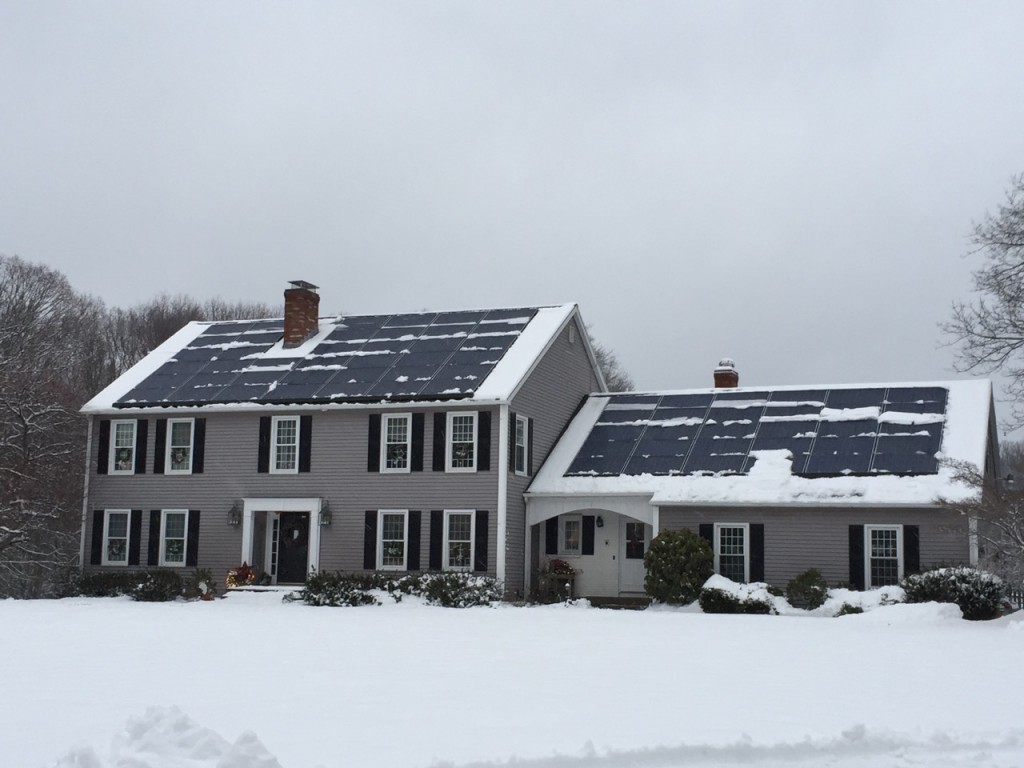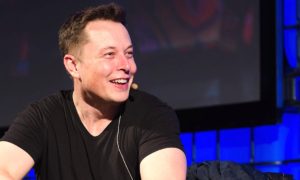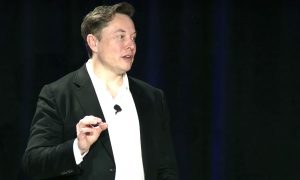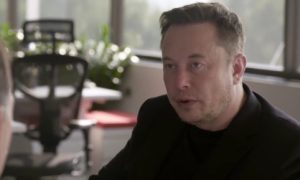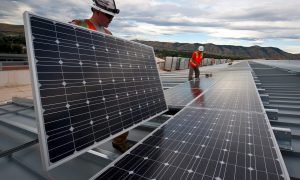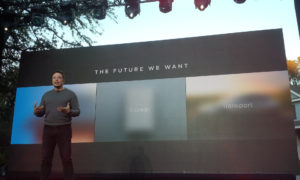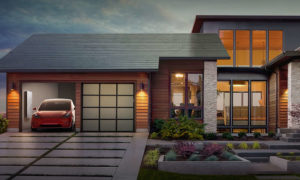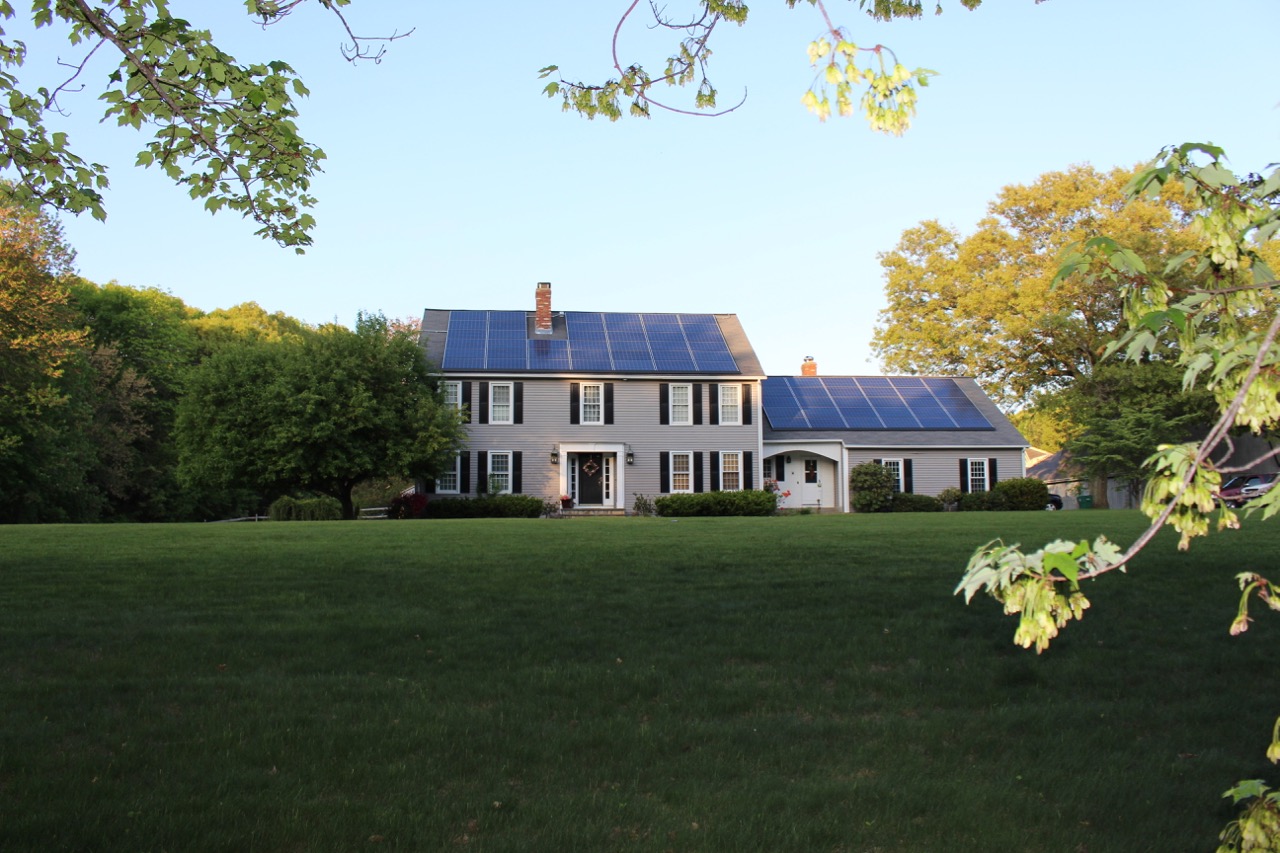

News
My journey with a SolarCity System: Snow, Net Metering
After 9 months of planning, waiting and negotiating, my SolarCity system installation was finally completed in December of 2014. Following the install, the only steps that remained were to implement updates required for net metering and to finalize the electrical and building inspections.
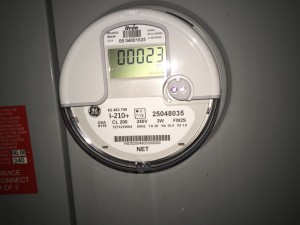
The electrical inspection went quickly, but the building inspection was a pain. The local building inspector wasn’t very responsive and scheduled inspections shortly after large snow storms, but then refused to do the inspection due to “snow covering the panels”.
While we waited for the inspections, which finally took place in March of 2015, National Grid installed a new Net Meter. Net meters are capable of monitoring the amount of power being sent back into the grid. The meter swap is quick work, but be forewarned that it requires power to be cut from your home during the swap.
Weathering the Storm
We had a brutal Winter here in the Northeast and this was my first year with panels. So I had concerns about the impact of the heavy snow being on top of the panels, and also how one goes about cleaning off the snow. I asked SolarCity about proper handling and they told me not to worry about it:
“We understand your concern with the snow and the load that it would cause. Please be advised that when your system was built, our engineers took into consideration, your roof structure as well as the amount of weight that it would be able to hold. We also have the system approved by the City for load bearings.The City and our engineers did take into consideration, the amount of largest amount of snow that your roof can withstand before we installed. I understand that there was a mass message out to all the people in the area advising them to make sure that they clear the roof. We advised that you allow the snow to melt/slide down on its own., If you are hiring someone to come out to clear the roof. Make sure that they be careful and they only sweep the panels.”
I patiently waited for the snow to slide off the panels and sure enough it did, and with no issues. The snow slides off the black, wet glass-like surface of the solar panels. You definitely don’t want to be anywhere below the roofline when the snow decides to let go!
Early Issues – Broken Gear
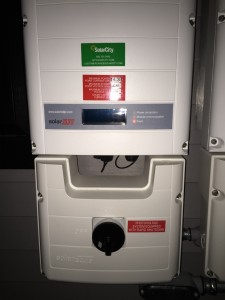 Once National Grid completed the net metering install, I was finally approved to turn on the system. The first step involves turning a big dial (on each inverter) from off to on. I have three inverters which means three dials to flip on.
Once National Grid completed the net metering install, I was finally approved to turn on the system. The first step involves turning a big dial (on each inverter) from off to on. I have three inverters which means three dials to flip on.
I turned each of them on. Two lit green almost immediately while the remaining inverted displayed a red fault light. There were no instructions on what to do in this scenario; no manuals and no guidance, so my only option was to call for help.
Getting help from SolarCity on the issue at had was a frustrating experience. SolarCity has a lot to learn when it comes to customer service. I spoke to several customer support managers as I continued to escalate my issue.
Finally, after five weeks of follow ups and many phone calls, I got the broken inverter fixed.
Tip:
SolarCity doesn’t bother to tell you this, but what I discovered was a little black button in the middle of the inverter. It’s hard to see but if you press the button you’ll be able to cycle through messages on the digital display, one of which is a fault code. Providing SolarCity with a fault code is much more useful than just letting them know that a red light is blinking.
Early Issues – Snow Fall
As mentioned earlier, snow doesn’t stick to the panels for long, but it does manage to build up before it lets go. Imagine 3 feet of heavy snow mixed with ice over your entire roof all letting go at the same time. It’s not a slow drip. It’s an avalanche.
The end result is dead flowers, dead bushes, and broken branches on vegetation immediately below the roof. As much as it’s common sense that snow will eventually melt from a roof and slide down, I wish SolarCity would have warned us that snow tends to slide from solar panels at a much quicker rate. I would have done something to fortify those flowers and bushes. After all, landscaping is not cheap.
There’s an accident waiting to happen so I think it’s in SolarCity’s best interest to pre-warn people of this, especially newbies to the world of solar panels.
Summary
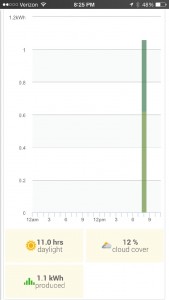 Eleven months after starting the project, my SolarCity system finally went live (partially) on February 23, 2015. And on April 1, 2015, the third inverter was fixed allowing the system to work in its full capacity.
Eleven months after starting the project, my SolarCity system finally went live (partially) on February 23, 2015. And on April 1, 2015, the third inverter was fixed allowing the system to work in its full capacity.
The image to the right is showing the day when the transformer on my street blew up and the entire street lost power for several hours. I added 33% more power from my large system going back into the network while using very little (Winter time) the same day the transformer blew. But then again, it was also April 1. Nobody made a fuss — National Grid replaced the transformer and all has been stable since. My best guess as to why that happened? Perhaps the transformer was already near its thresholds and my solar installation was the one to tip it over?
I’ll be writing about system monitoring, cost savings and billing errors in upcoming posts. The story isn’t over yet.
Elon Musk
Why Tesla’s Q3 could be one of its biggest quarters in history
Tesla could stand to benefit from the removal of the $7,500 EV tax credit at the end of Q3.

Tesla has gotten off to a slow start in 2025, as the first half of the year has not been one to remember from a delivery perspective.
However, Q3 could end up being one of the best the company has had in history, with the United States potentially being a major contributor to what might reverse a slow start to the year.
Earlier today, the United States’ House of Representatives officially passed President Trump’s “Big Beautiful Bill,” after it made its way through the Senate earlier this week. The bill will head to President Trump, as he looks to sign it before his July 4 deadline.
The Bill will effectively bring closure to the $7,500 EV tax credit, which will end on September 30, 2025. This means, over the next three months in the United States, those who are looking to buy an EV will have their last chance to take advantage of the credit. EVs will then be, for most people, $7,500 more expensive, in essence.
The tax credit is available to any single filer who makes under $150,000 per year, $225,000 a year to a head of household, and $300,000 to couples filing jointly.
Ending the tax credit was expected with the Trump administration, as his policies have leaned significantly toward reliance on fossil fuels, ending what he calls an “EV mandate.” He has used this phrase several times in disagreements with Tesla CEO Elon Musk.
Nevertheless, those who have been on the fence about buying a Tesla, or any EV, for that matter, will have some decisions to make in the next three months. While all companies will stand to benefit from this time crunch, Tesla could be the true winner because of its sheer volume.
If things are done correctly, meaning if Tesla can also offer incentives like 0% APR, special pricing on leasing or financing, or other advantages (like free Red, White, and Blue for a short period of time in celebration of Independence Day), it could see some real volume in sales this quarter.
You can now buy a Tesla in Red, White, and Blue for free until July 14 https://t.co/iAwhaRFOH0
— TESLARATI (@Teslarati) July 3, 2025
Tesla is just a shade under 721,000 deliveries for the year, so it’s on pace for roughly 1.4 million for 2025. This would be a decrease from the 1.8 million cars it delivered in each of the last two years. Traditionally, the second half of the year has produced Tesla’s strongest quarters. Its top three quarters in terms of deliveries are Q4 2024 with 495,570 vehicles, Q4 2023 with 484,507 vehicles, and Q3 2024 with 462,890 vehicles.
Elon Musk
Tesla Full Self-Driving testing continues European expansion: here’s where
Tesla has launched Full Self-Driving testing in a fifth European country ahead of its launch.
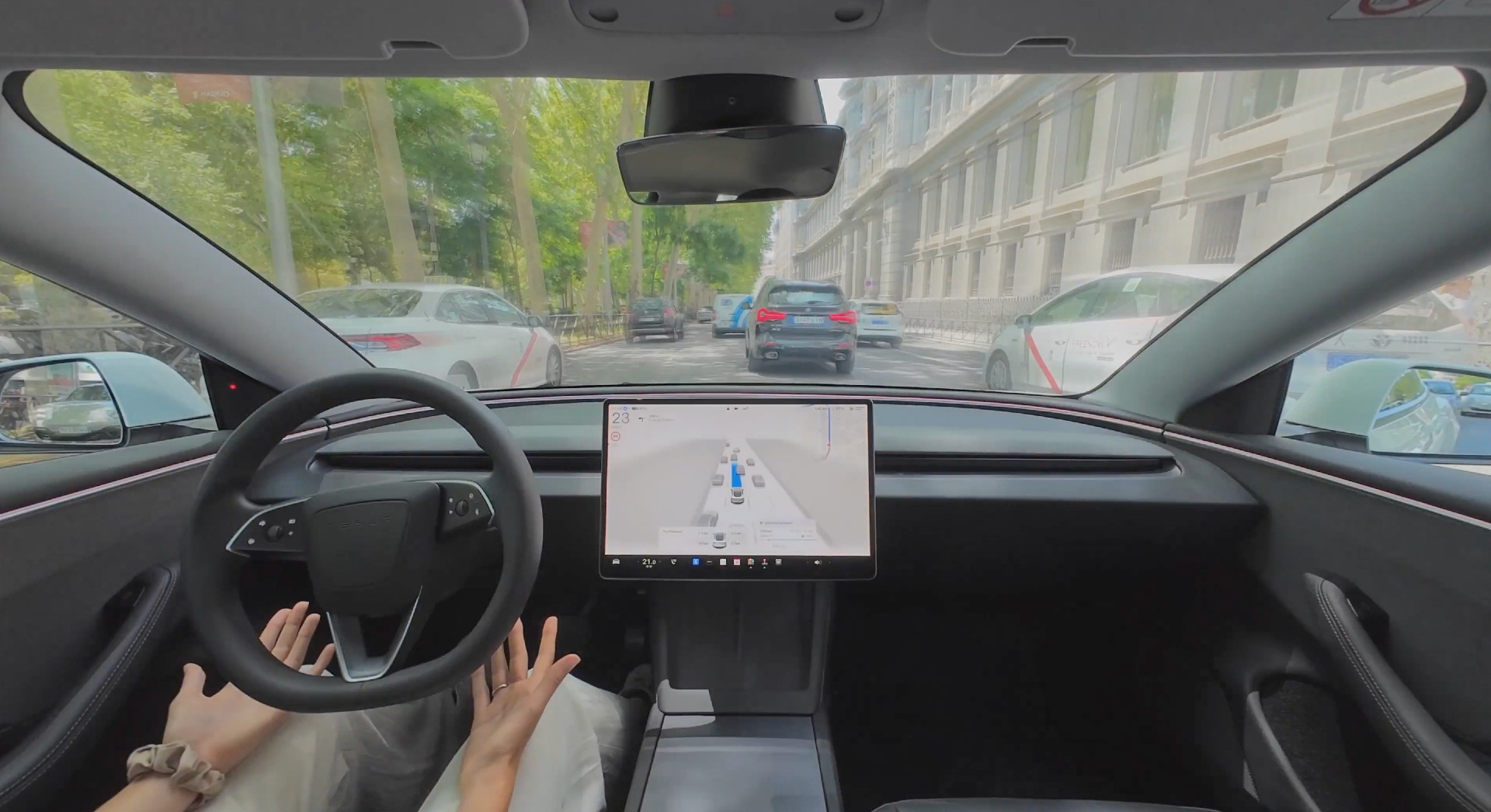
Tesla Full Self-Driving is being tested in several countries across Europe as the company prepares to launch its driver assistance suite on the continent.
The company is still working through the regulatory hurdles with the European Union. They are plentiful and difficult to navigate, but Tesla is still making progress as its testing of FSD continues to expand.
Today, it officially began testing in a new country, as more regions open their doors to Tesla. Many owners and potential customers in Europe are awaiting its launch.
On Thursday, Tesla officially confirmed that Full Self-Driving testing is underway in Spain, as the company shared an extensive video of a trip through the streets of Madrid:
Como pez en el agua …
FSD Supervised testing in Madrid, Spain
Pending regulatory approval pic.twitter.com/txTgoWseuA
— Tesla Europe & Middle East (@teslaeurope) July 3, 2025
The launch of Full Self-Driving testing in Spain marks the fifth country in which Tesla has started assessing the suite’s performance in the European market.
Across the past several months, Tesla has been expanding the scope of countries where Full Self-Driving is being tested. It has already made it to Italy, France, the Netherlands, and Germany previously.
Tesla has already filed applications to have Full Self-Driving (Supervised) launched across the European Union, but CEO Elon Musk has indicated that this particular step has been the delay in the official launch of the suite thus far.
In mid-June, Musk revealed the frustrations Tesla has felt during its efforts to launch its Full Self-Driving (Supervised) suite in Europe, stating that the holdup can be attributed to authorities in various countries, as well as the EU as a whole:
Tesla Full Self-Driving’s European launch frustrations revealed by Elon Musk
“Waiting for Dutch authorities and then the EU to approve. Very frustrating and hurts the safety of people in Europe, as driving with advanced Autopilot on results in four times fewer injuries! Please ask your governing authorities to accelerate making Tesla safer in Europe.”
Waiting for Dutch authorities and then the EU to approve.
Very frustrating and hurts the safety of people in Europe, as driving with advanced Autopilot on results in four times fewer injuries!
Please ask your governing authorities to accelerate making Tesla safer in Europe. https://t.co/QIYCXhhaQp
— Elon Musk (@elonmusk) June 11, 2025
Tesla said last year that it planned to launch Full Self-Driving in Europe in 2025.
Elon Musk
xAI’s Memphis data center receives air permit despite community criticism
xAI welcomed the development in a post on its official xAI Memphis account on X.
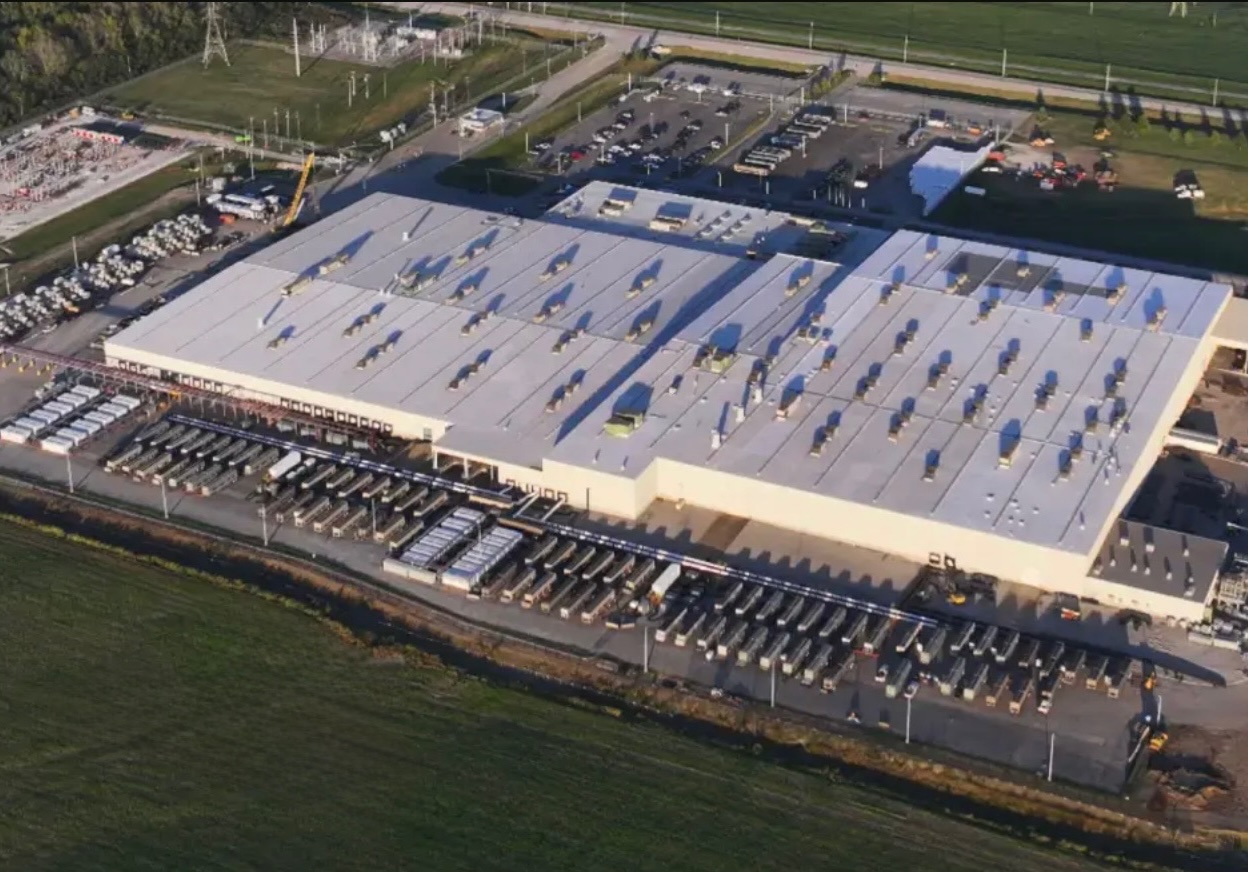
Elon Musk’s artificial intelligence startup xAI has secured an air permit from Memphis health officials for its data center project, despite critics’ opposition and pending legal action. The Shelby County Health Department approved the permit this week, allowing xAI to operate 15 mobile gas turbines at its facility.
Air permit granted
The air permit comes after months of protests from Memphis residents and environmental justice advocates, who alleged that xAI violated the Clean Air Act by operating gas turbines without prior approval, as per a report from WIRED.
The Southern Environmental Law Center (SELC) and the NAACP has claimed that xAI installed dozens of gas turbines at its new data campus without acquiring the mandatory Prevention of Significant Deterioration (PSD) permit required for large-scale emission sources.
Local officials previously stated the turbines were considered “temporary” and thus not subject to stricter permitting. xAI applied for an air permit in January 2025, and in June, Memphis Mayor Paul Young acknowledged that the company was operating 21 turbines. SELC, however, has claimed that aerial footage shows the number may be as high as 35.
Critics are not giving up
Civil rights groups have stated that they intend to move forward with legal action. “xAI’s decision to install and operate dozens of polluting gas turbines without any permits or public oversight is a clear violation of the Clean Air Act,” said Patrick Anderson, senior attorney at SELC.
“Over the last year, these turbines have pumped out pollution that threatens the health of Memphis families. This notice paves the way for a lawsuit that can hold xAI accountable for its unlawful refusal to get permits for its gas turbines,” he added.
Sharon Wilson, a certified optical gas imaging thermographer, also described the emissions cloud in Memphis as notable. “I expected to see the typical power plant type of pollution that I see. What I saw was way worse than what I expected,” she said.
-

 Elon Musk3 days ago
Elon Musk3 days agoTesla investors will be shocked by Jim Cramer’s latest assessment
-

 News1 week ago
News1 week agoTesla Robotaxi’s biggest challenge seems to be this one thing
-

 News2 weeks ago
News2 weeks agoTexas lawmakers urge Tesla to delay Austin robotaxi launch to September
-

 Elon Musk2 weeks ago
Elon Musk2 weeks agoFirst Look at Tesla’s Robotaxi App: features, design, and more
-

 Elon Musk2 weeks ago
Elon Musk2 weeks agoxAI’s Grok 3 partners with Oracle Cloud for corporate AI innovation
-

 News2 weeks ago
News2 weeks agoSpaceX and Elon Musk share insights on Starship Ship 36’s RUD
-

 News2 weeks ago
News2 weeks agoWatch Tesla’s first driverless public Robotaxi rides in Texas
-

 News2 weeks ago
News2 weeks agoTesla has started rolling out initial round of Robotaxi invites

